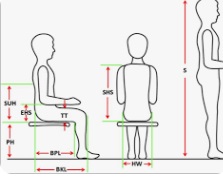In a systematic review and meta‑analysis Ahn et al. from St. Mary’s Hospital, Seoul; The Catholic University of Korea, Seoul published in Acta Neurochirurgica to evaluate associations between height, body mass index (BMI), and both the risk and prognosis of glioma andglioblastoma through aggregated epidemiological data Taller stature increases risk of glioma/glioblastoma (HR per +10 cm ~1.19–1.25). Higher BMI modestly elevates incidence risk (RR ~1.08; HR per +5 kg/m² ~1.01–1.02) and correlates with improved survival in glioblastoma (HR ~0.75).
Critical Review
* Study design & scope:
-
Solid use of PRISMA flow, Newcastle–Ottawa scoring. 23 studies from large databases until Jan 31, 2024.
-
Random‑effects model appropriate given heterogeneity.
* Strengths:
-
Broad dataset; consistency in directionality of height risk.
-
Quantitative measures (HR/RR) allow clinical interpretation.
* Weaknesses:
-
Residual confounding: socioeconomic status, comorbidities, treatment variations not fully accounted.
-
Survival benefit with higher BMI might reflect reverse causation (cachexia at diagnosis), stage bias, or selection bias.
-
Study-level meta‑analysis; no patient-level adjustment.
-
Heterogeneity between studies (cohort vs case–control) not dissected thoroughly.
* Interpretation concerns:
-
Association ≠ causation: taller height likely serves as proxy for insulin‑like growth factor (IGF) axis or early‑life exposures.
Verdict & Takeaway
Rating: 5.5 / 10 — competent analysis but limited by observational biases, heterogeneity, and lack of mechanistic insight
Practicing Neurosurgeon Takeaway:
– Be aware that taller adults appear at slightly higher risk for glioma/glioblastoma—useful for population studies but not individual risk stratification.
– Beware simplistic interpretations of BMI-related survival benefits; weight preservation at diagnosis is meaningful, but no indication to promote higher BMI.
Bottom Line:
Height and BMI show modest, statistically significant associations with glioma incidence and glioblastoma survival. However, causality is unproven and survival results likely reflect confounding and selection effects rather than actionable therapeutic insights.
Corresponding author: Department of Neurosurgery, Seoul St. Mary’s Hospital, Seoul, South Korea; Email: nsstp@catholic.ac.kr
Ahn J, Kim J, Shin C, Ahn S. Anthropometrics, cancer risks, and survival outcomes in adult patients with glioma – a systematic review and meta-analysis. Acta Neurochir (Wien). 2025 Jul 10;167(1):188. doi: 10.1007/s00701-025-06579-4. PMID: 40634830.
